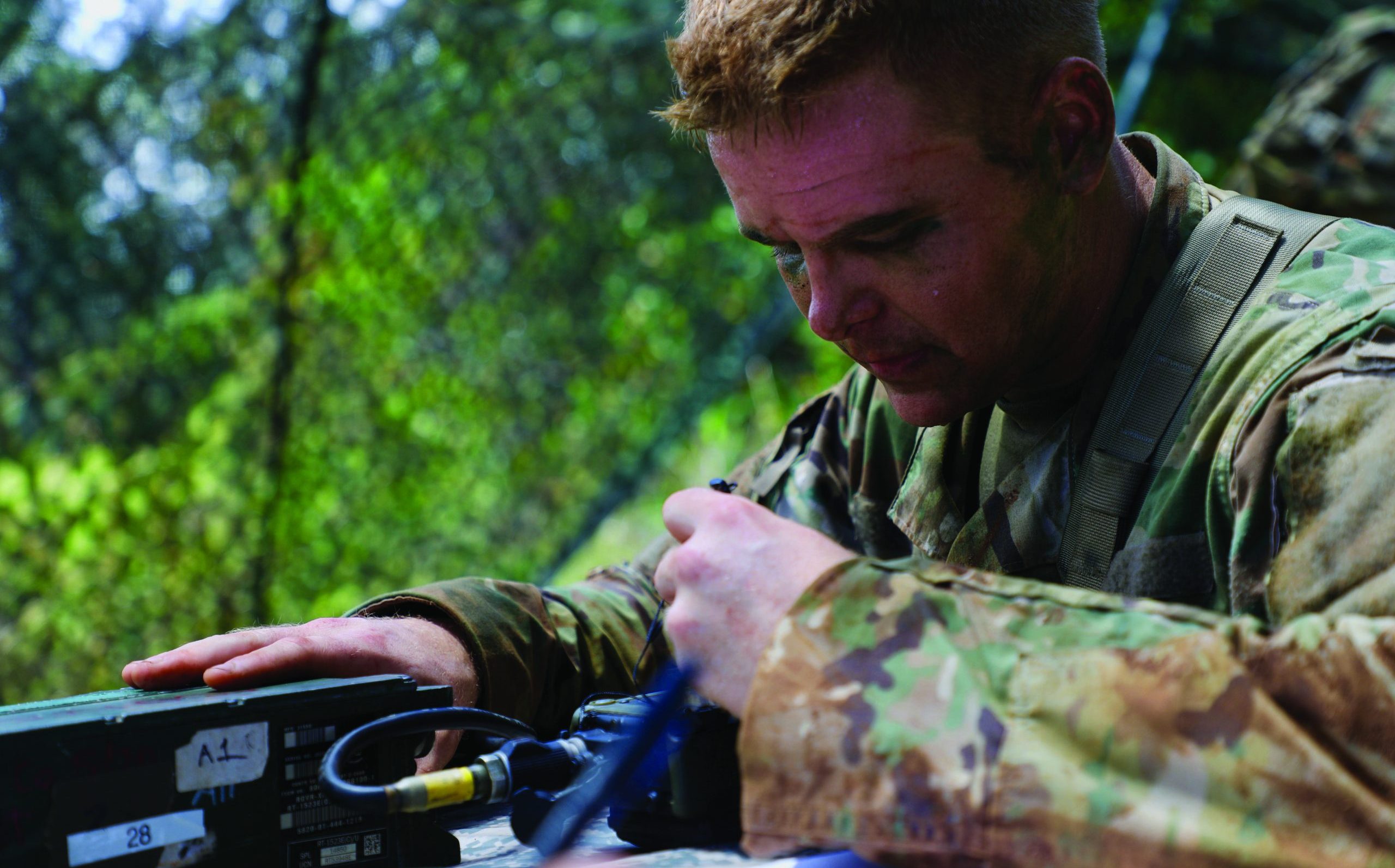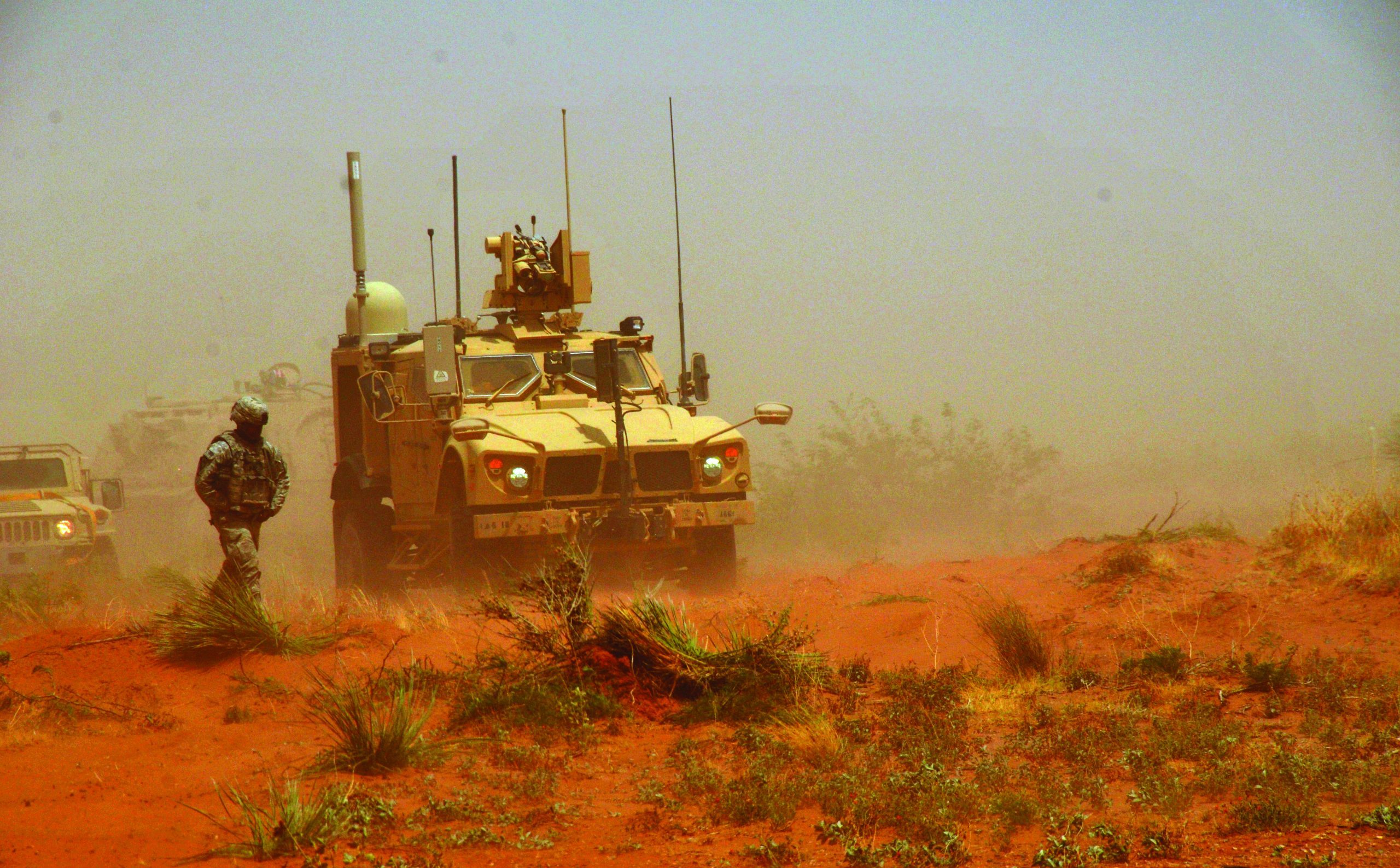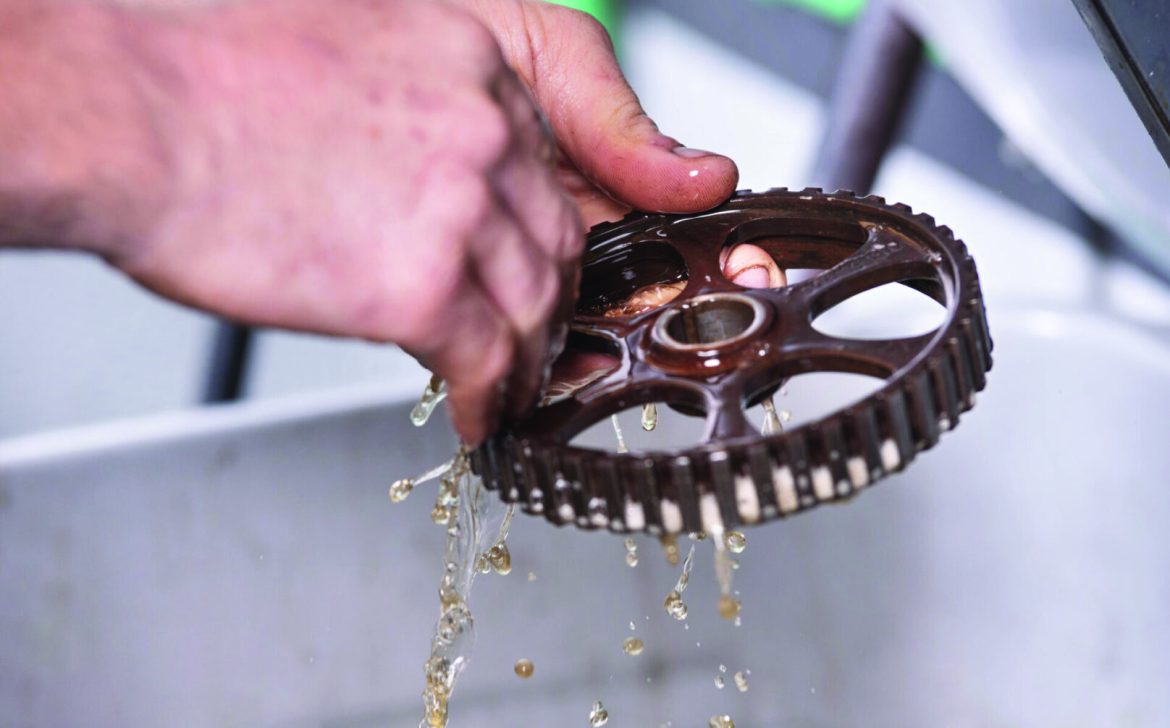The efficiency of equipment, weapons and military products is an important element in measuring the combat readiness of any army. Therefore, armies have developed military standards and specifications for the equipment serving in the harsh conditions of theatres of operation. The US Department of Defence established the Military Standards (MIL-STD) implemented by the US Air Force, Army and Navy to ensure products meet specific defence-related requirements, achieve standardisation within the military institution, and demonstrate reliability, interoperability and compatibility of products and components developed for military use – from programming languages to communications and environmental/operational conditions.
Military standards provide guidance on almost every aspect of the defence world.
The comprehensive list of military test methods also provides standards and guides on formatting military standards. This means these comprehensive technical standards and specifications improve operational efficiency, which on the battlefield translates into enhanced safety and mission success for allied forces.
Consider this scenario: A military aircraft flying above the clouds collecting information via powerful computer servers. Suddenly, as often happens, the aircraft experiences turbulence leading to a drop in altitude and rapid change in internal temperature. It is subjected to high shocks and vibrations throughout the airframe. This continues for a few minutes before conditions return to normal, and the pilot levels out the aircraft at the required altitude.
In such a scenario, wouldn’t the disturbance affect the sensitive computer systems? Computers can transition from peak performance to failure within seconds. Severe shock could break a critical component. Sustained vibrations could loosen server electronic cards. Temperature fluctuations could raise the temperature of the entire system leading to failure.
In reality, this will not occur if the servers and military workstations are properly designed per military standards for this purpose – meaning they are designed, manufactured and tested to easily withstand harsh conditions.
MIL-STD-810: Concept and Objectives
MIL-STD-810 is the environmental testing of military equipment to define test and design requirements for equipment and products used by the US military.
This is done to verify their ability to withstand environmental stress incidents throughout their life cycle.
Developed by the US Department of Defense to validate the robustness and reliability of military equipment and systems, this standard identifies environments and conditions that military equipment must withstand along with required testing and certification to ensure performance in the field.
Some test methods a MIL-STD-810-qualified product may undergo include mechanical shock, vibration, temperature, high/low pressure, humidity, fungi, salt fog, sand, dust, and explosive atmosphere.
Testing and qualifying equipment for these harsh conditions provides military personnel assurance that the products they procure are rugged, reliable, durable and suitable for battlefield use.
Moreover, it assists field commanders in verifying the ruggedness and performance of the equipment used in harsh climatic and dynamic conditions to ensure mission readiness.
For example, the immersion test in MIL-STD 810 measures equipment performance and robustness when partially or fully submerged in water.
Therefore, navies may want assurance that a product they purchase is qualified to this standard.
Military personnel worldwide look to equipment and weapons performance, a challenge that remains a concern only dispelled by the reliability proven across all test stages, and most importantly on the battlefield where it matters.
The Military Equipment Testing in Harsh Environments standard is primarily applied to:
Identify the sequence of environmental stress and duration at equipment life cycle levels.
Develop appropriate test analysis and methods for the equipment along their life cycle.
Evaluate equipment performance when exposed to the environmental stress sequence.
Identify defects in equipment, materials, manufacturing processes, packaging techniques and maintenance methods.
Meet contractual requirements when supplying military equipment.

SCHOFIELD BARRACKS, Hawaii – Soldiers from the 25th Infantry Division tested the warrior tasks and battles drills by going through situational training exercise lanes April 10, as part of the Tropic Lightning Best Warrior Competition. The Tropic Lightning Best Warrior Competition is a weeklong event that will test Soldiers competing on the overall physical fitness, warrior tasks and battle drill, and professional knowledge. (U.S. Army photo by Sgt. Ian Ives, 25th Sustainment Brigade Public Affairs /Released).
The Evolution of MIL-STD 810
By the end of World War 2, vibration testing’s decisive importance and impact on equipment performance became apparent. However, until 1960 there were no specifications or standards across US military branches to unify military technology.
As the need grew for vibration standards, comprehensive design processes and environmental stress testing evolved to prove materials and products could withstand anticipated vibration stresses over their service life.
MIL-STD-810 was first issued in 1962 to establish environmental test methods for ground and space equipment across areas like temperature, immersion and vibration.
In 1964, Revision A was issued. Multiple lettered revisions of the standard continued development up to the latest 2019 Revision H, which expanded the scope of environmental design and testing to encompass a broad range of managerial and technical concerns.
Accordingly, environmental design and testing were directed at three major user groups: program managers, environmental engineering specialists, design and testing engineers and facility operators.
It also introduced a broad array of methods specifying how to conduct laboratory tests to ensure the product meets user requirements.
Products passing each test are then considered compliant with the standard, which is often a prerequisite for inclusion in specific military programmes.
For instance, the standard for computer systems covers a wide range of environmental conditions that establish the overall robustness or ruggedness of a computer system.
This standard can be divided into three categories:
• Environmental engineering program guidelines
• Laboratory test methods
• Global climatic zones
Over the years, this document has maintained its original purpose of ensuring products can withstand harsh environments and remain operationally compatible with defence applications.
How is MIL-STD-810 applied to products?
The MIL-STD-810 test contains three distinct sections. Each section serves a specific purpose and is related to identifying the detrimental effects the environment can have on a product.
The first part of the standard outlines a disciplined, tailored approach to requesting systems and products. The aim is for the product to withstand the stresses of simulated climatic environments, shocks and vibrations expected to be encountered during the product’s life.
The second part provides environmental stress data and laboratory test methods. The environmental data contained in these methods is meant to help identify the environmental stresses materials or products will face throughout their lifecycle.
Ultimately, this will help engineers tailor analyses and tests to specific materials and products.
The third part of this standard provides planning guidance for realistic consideration of climatic conditions and environmental stresses simulating the battlefield.
These scenarios can occur at various stages including research, development, testing and evaluation. It is important to consider the product’s entire lifecycle as well as the different climatic zones across the globe.
Therefore, this section helps achieve the goal of developing products that will function appropriately under the environmental conditions likely to exist throughout their lifecycle in their intended areas of use.
When a product is defence and aerospace-ready, selected test methods are typically identified based on where the product will be integrated, such as a ground vehicle or aircraft, the mission environment and anticipated operating conditions. Although governed by standards, requirements allow flexibility for precise tailoring to ensure the specific product meets them.
For MIL-STD 810 and all military standards, testing is usually conducted at an external accredited laboratory. These certified labs ensure adherence to precise procedures and provide an impartial stance on verification test results. For instance, if you want to purchase ruggedised, standards-qualified servers, the first thing that comes to mind is requesting which test methods they have been qualified to and the test results. Specifically, the benchmarks the rugged server was tested to, usually by requesting answers to:
• What military standard did the product pass?
• What test method(s) was it tested to?
• What were the test method benchmarks?
• What were the results?

List of Tests
MIL-STD-810 (Environmental Testing of Military Equipment) has 29 tests. These include: low pressure (altitude), high temperature, low temperature, thermal shock, fluid contamination, solar radiation, rain, humidity, fungus, salt fog, sand and dust, explosive atmosphere, immersion, acceleration, vibration, acoustic noise, shock, explosive shock, acidic atmosphere, gunfire shock, ice/frozen rain, ballistic shock, acoustic vibration/temperature, icing, time waveform replication, rail impact, multi-exciter testing, shipboard vibration.
Some test highlights:
1- Low-Pressure Test: This test evaluates if a system or product can withstand or operate in a low-pressure environment or withstand rapid pressure changes. Using this method, any system or product intended for air transport at some stage in its life should be tested due to the greatly reduced pressure associated with high altitudes. Per this standard, test engineers should use this test on systems that are expected to:
• Be stored or operated at high ground elevations.
• Be transported or operated in pressurised or unpressurised areas of aircraft.
• Experience rapid or explosive decompression.
• Be externally carried on aircraft.
2- Extreme Temperatures: Per MIL-STD 810, this test evaluates the effects of high or low-temperature conditions or thermal shocks on material, product and system performance and integrity during operation and storage in various simulated environments.
3- Fluid Contamination: Exposure of materials or products to contaminated fluids, either temporarily or permanently, can degrade the material’s performance by changing the physical properties of its materials.
In the field, fluid contamination can occur from exposure to fuels, hydraulic fluids, lubricants, solvents and cleaning agents, de-icing and anti-freeze liquids, insecticides, disinfectants, coolants, and insulating fluids. Per MIL-STD 810, the fluid contamination test aims to evaluate the effects of temporary exposure of a system or product to given fluids. Test engineers typically use this test when there is a high probability the product or system will accidentally or deliberately encounter contaminating fluids in the field. The results of this test help determine if any product modification is needed to adapt the system to its particular service environment. Whether exposure occurs occasionally, intermittently or over a long duration, if the system passes the test it means that it has significant protection against any contaminated fluids it may encounter during its service life.
4- Solar Radiation Test: Any system or material likely to be exposed to direct sunlight for extended periods and consequently subjected to its physical and chemical effects should undergo solar radiation testing to prevent damage or degradation.
Per MIL-STD 810, the solar radiation test aims to evaluate the effects of heat build-up caused by solar electromagnetic radiation on a system, material or product. This test can also be used to evaluate the alternate effects of light, known as photodegradation.
5- Rain Test: This test is used to evaluate equipment resistance and performance when subjected to rain and other forms of water ingress. It assesses the ability of equipment to withstand and operate in environments subjected to rain, flooding or water spray during storage, transit or operation. Generally, equipment does not need to undergo rain testing if it has already passed immersion testing. However, there are instances where rain revealed problems not observed during immersion tests due to differential pressure.
6- Humidity Test: The humidity test aims to determine a system’s resistance to warm, humid environments. This applies to systems that will be stored or deployed in these environments at some stage in their life cycle. Enclosed systems in non-operating vehicles within these environments may also experience high humidity levels. As such, humidity testing of rugged computer systems is essential if they are expected to be unaffected and function properly in these conditions. Humidity testing involves using equipment such as humidity chambers, steam or water injection to create the required relative humidity conditions.
7- Sand and Dust Test: The sand and dust test evaluates a system or product’s resistance to particle ingression. Sand and dust can clog openings, and penetrate cracks, joints, foil bearings and seals.
MIL-STD 810 defines dust as particles less than 150 micrometres in diameter, while sand is particles between 150-850 micrometres. The environmental sand and dust test is conducted by placing the system or product in a blow cabinet and subjecting it to sand or dust particles while controlling temperature, relative humidity, air velocity, particle composition, concentration, and orientation.
»By:Retired Colonel Eng. Khaled Al-Ananzaha (Advisor and Trainer in Environmental and Occupational Safety)













